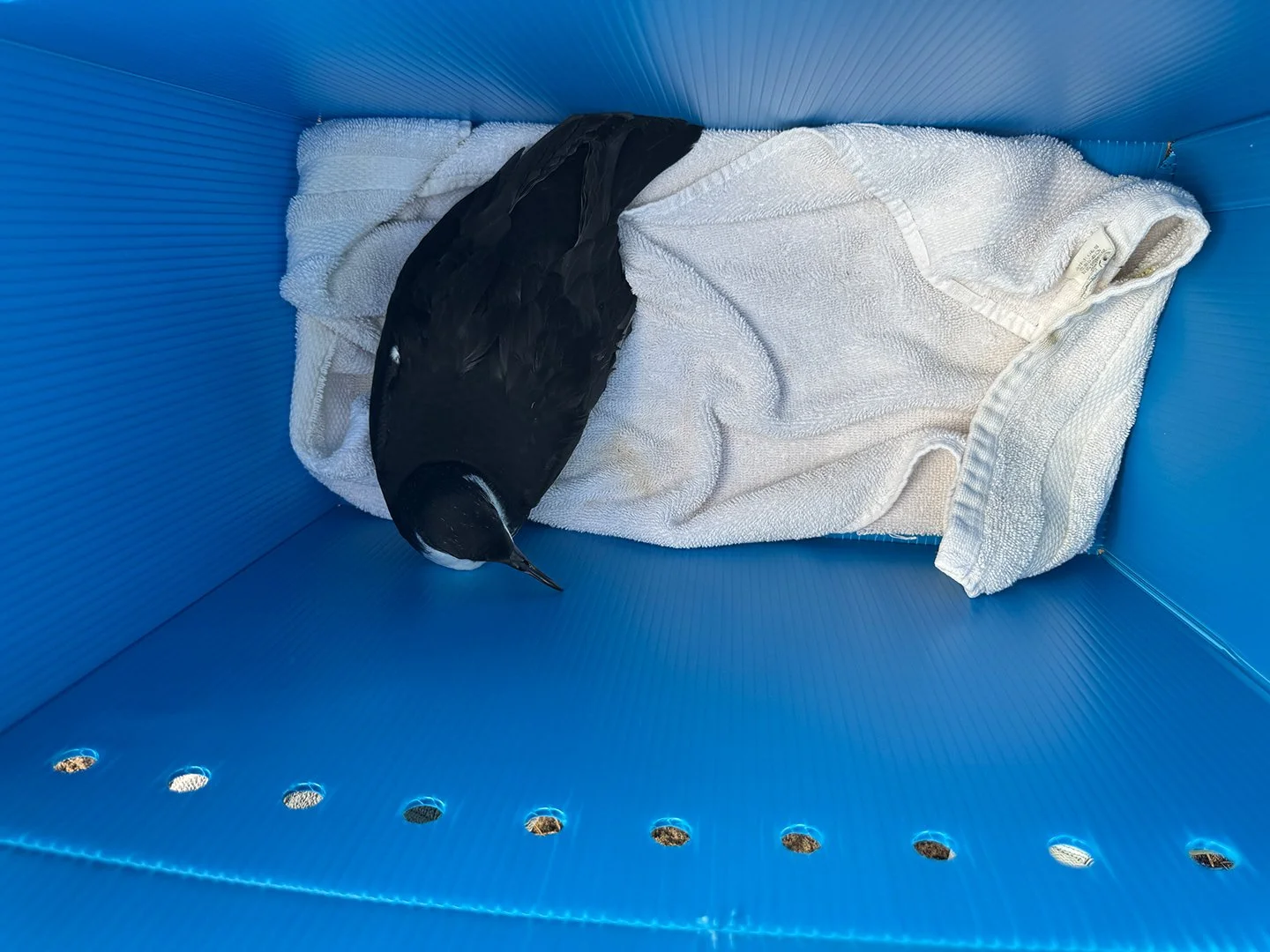Flying Free on Kaua’i
Children Cheer as Endangered Birds Fledge
By Safina Center Conservationist-in-Residence Hob Osterlund
‘A’o (Newell’s shearwater) fledgling. ©Hob Osterlund
Such a beautiful October morning on Kaua’i could make you tipsy. The temperature is a perfect cocktail of warm sun, cool trade winds and fluffy clouds—most of which are rolling around overhead like dopey dogs in wet sand. What’s even luckier? Heavy rains were predicted but managed to dump themselves elsewhere.
People—mostly women—start arriving in small clusters at a quiet corner of Lydgate Beach Park on the east side of the island. Some are wearing T-shirts that announce their affections and affiliations: Save Our Shearwaters (SOS). Kaua’i Endangered Seabird Recovery Project (KESRP). Friends of Kaua’i Wildlife Refuges (FKWR). Hanalei Watershed Hui (HWH). Kaua’i Albatross Network (KAN). More.
‘A’o fledgling in transport box. ©Hob Osterlund
Three of the women are holding blue carboard carriers maybe twice the size of a shoebox. Each box has airholes punched evenly on the upper edges. All of them contain one endangered fledgling, a small black and white seabird known as an ‘a’o, or Newell’s shearwater. Their call sounds a bit like a braying donkey. Parents build nests in remote mountain burrows on Kaua’i, where the chicks hatch and grow up.
The call of an ‘a’o. Video courtesy of Kaua’i Endangered Seabird Recovery Project.
‘A’o parents nesting in a mountain burrow on Kaua’i. Video courtesy of Kaua’i Endangered Seabird Recovery Project.
The fledglings today have a common history of attempting first flight and—instead of heading out over the ocean—ending up on the ground, usually due to human-made lights or powerlines. Each has been rescued by one or other nameless good Samaritan, then dropped off like feathered parcels in one of many collection crates around the island. Each bird has been evaluated by veteran professionals at SOS, rehabbed if necessary, and ultimately deemed ready for release.
Today is that day for three ‘a’o.
Kumu (teacher) Sabra Kauka.
The blue boxes are placed gently in a shady spot away from the main path to the beach. The small gathering includes Sabra Kauka, a kumu (teacher) who has been primary to this event for more than twenty years. It’s officially called the “2025 E Hoʻopomaikaʻo Ia Na Manu ʻAʻo” (a Cultural Release of the Native Newell’s Shearwater). The event is organized and led by the KESRP team. The birds are cared for and delivered by SOS staff.
A yellow bus pulls into the parking lot with schoolkids in tow: fourth-graders from Island School in Lihu’e, wearing blue and gold t-shirts, and eighth-graders from Kapa’a Middle School, wearing green and white. The kids make a short trek to a small wooden pavilion overlooking the ocean.
Hawaiian chanting with Kumu Sabra Kauka. ©Hob Osterlund
Once everyone is gathered, kumu Sabra leads the students in a chant for the well-being of the birds. SOS and KESRP staff describe the ‘a’o lifecycle to the students, then bring one of the birds swaddled in a towel and lifted from their little blue condos. The kids take a close look, which is likely to be a once-in-a-lifetime moment.
‘A’o swaddled in towel. ©Hob Osterlund
Then, as the gathered community watches, the ‘a’o are hand-carried one at a time to a platform just above the beach. Each bird is assigned to one adult: Sabra Kauka; Councilmember Fern Ānuenue Holland, and Mike Mitchell, US Fish and Wildlife Service emeritus.
Kaua’i County Councilmember Fern Ānuenue Holland releases an ‘a’o. ©Hob Osterlund.
Free of obstacles, the birds hesitate, flap their naïve young wings, then suddenly leap into flight
The kids cheer. We all cheer.
Malama pono, you sweet birds. Take good care.
Malama pono, you fine young students. Take good care.
Malama pono, you teachers and scientists and rehabbers and volunteers.
Take good care.




